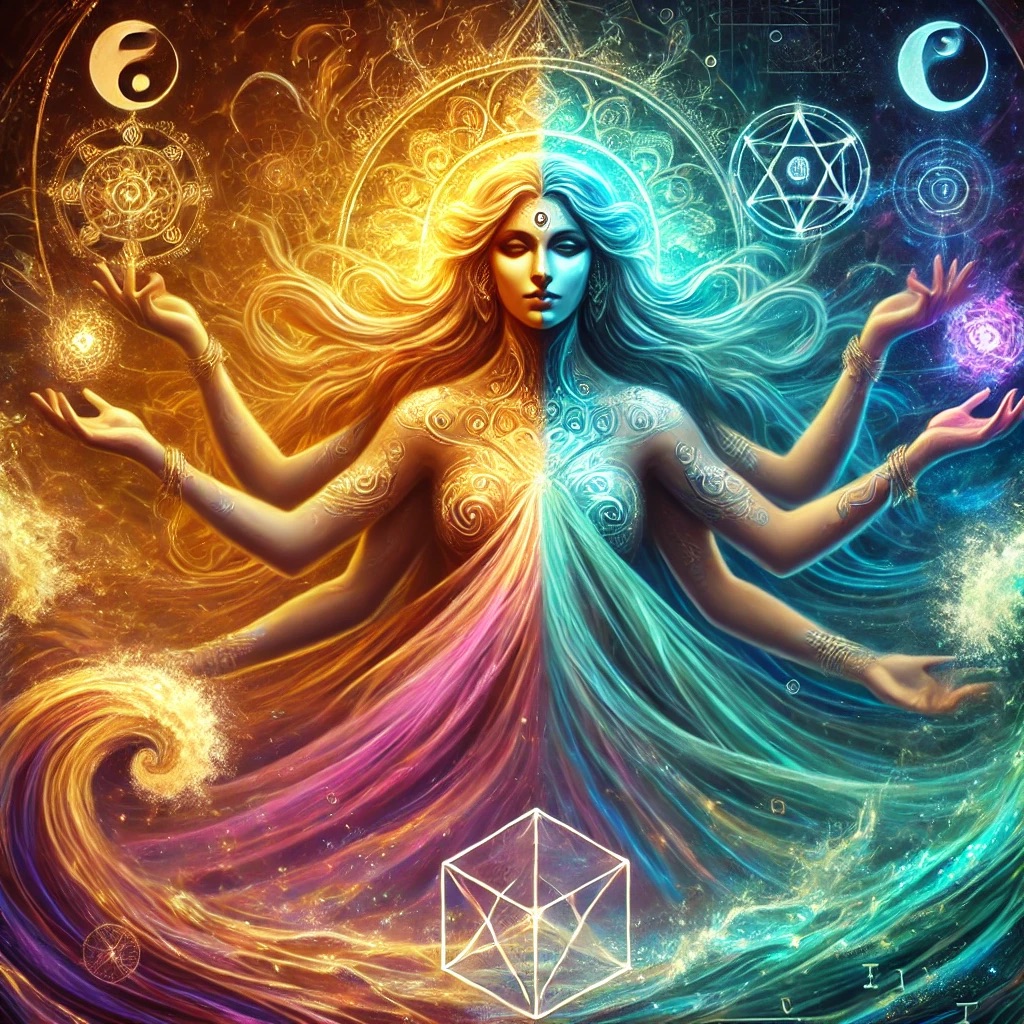The prefix ambi- comes from Latin, meaning “both” or “around.” It speaks to a movement that embraces multiplicity—holding two perspectives, weaving between worlds, circling rather than dividing. We see its essence in words like ambiguous (holding more than one meaning), ambidextrous (skilled with both hands), and ambient (surrounding, all-encompassing).
Yet Ambi is more than a linguistic curiosity. Echoes of her name trace back to the goddess Ambika, a fierce and loving form of Durga, the great cosmic mother. She is the slayer of illusions, the nurturer of life. She is Shakti, pure creative force, unbound by binaries yet manifesting through them. Her presence is at once playful and profound, sacred and wild, a whisper and a roar.
Like the swirling ambi form—known in the West as the paisley motif—her essence is not linear, but fluid. This ancient symbol, found across cultures, mirrors the unfurling of creation itself: a spiraling motion that neither begins nor ends, yet always moves. It is the play beyond polarity, the dance of becoming, the perpetual weaving of all that is.
Ambi moves beyond either-or, flowing as the dance of opposites in motion, where contrast fuels creation and boundaries dissolve into rhythm.
In the pulse of ambi, we find the eternal rhythm of Shiva and Shakti, yin and yang, the feminine and the masculine—not as fixed opposites, but as entwined forces spiraling through existence. To invoke ambi is to invite the paradox, the mystery, the spaciousness of both-and. It is to stand in the liminal, to welcome the unknown, and to revel in the cosmic dance of everything.
.

Leave a Reply